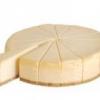Thank you Charles,
The commercial product is sterile long life product. Restaurant product will not be of the same microbiological quality or shelf life as fresh commercial.
Regards,
Tony
Hi Tony,
Must admit that, AFAIK, I have never seen / consumed / or (previously) studied hummus. There appear to exist a variety of “commercially sterile” hummus-type products possibly due flexibility of terminology. Storage possibilities seem to vary as, I think, your prev. post implied, from simple chilled refrigeration, to, for example, at least 3 years in a “cool” place.
I noticed this comment –
Hummus is one such traditional food native to the Eastern Mediterranean Region which has now become a very popular food of choice among consumers of diverse backgrounds all over the world. The United States is one such country in which commercially produced hummus is becoming a viable industry, but with this comes the challenges of shelf-life extension. Typically only a minimal heat treatment is applied in the preparation of hummus (except for the boiling of the chickpeas, no other heat treatment is applied) (25). Hence most commercially produced hummus may only be considered as pseudo pasteurized products, because it is impossible to attain commercial sterility through this minimum thermal processing (14). As such there is the possibility of different types of microorganisms thriving in hummus (a high water activity food), despite its low pH (mean pH of about 5.1) (24).
 hummus spoilage, et al..pdf 2.78MB
49 downloads
hummus spoilage, et al..pdf 2.78MB
49 downloads
Frankly, I find a tolerance of < 500 cfu/g (prev. micro.spec.) somewhat difficult to reconcile with my own (canning) perception of “commercial sterility” despite the claimed (self-contradictory?) long “ambient” shelf life / absence of significant chemical hurdles other than pH...
However I also saw this, distinctly non-Codex, interpretation of Commercial Sterility in one publication –
The characteristic of commercially sterile products is that they have been heat treated to eliminate all pathogenic organisms and to reduce spoilage organisms to a level where they will not produce a health hazard or reduce the quality and acceptability of a product.
I suppose this would offer more subjective opportunities for a product specification. 
Regarding OP's Yummus (!), seems difficult to say much without more specific info, for example a process flow (HPP!?) and product specification would be nice. At least the aw looks low. Perhaps, for a 3yr, 37degC shelf life, it is “commercially sterile” already from a plate count POV. Yeast (as per Caz) looks much more problematic. Pathogens, who knows? 
Rgds / Charles.C



















